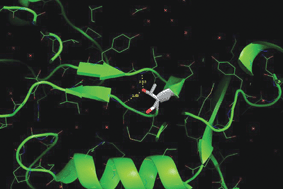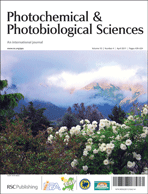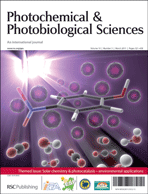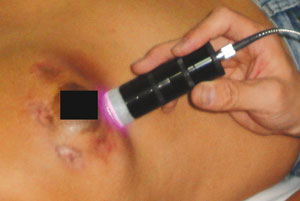This month sees the following articles in PPS that are in the top ten most accessed:-
Targeted photodynamic therapy of breast cancer cells using antibody-phthalocyanine-gold nanoparticle conjugates
Tanya Stuchinskaya, Miguel Moreno, Michael J. Cook, Dylan R. Edwards and David A. Russell
Photochem. Photobiol. Sci., 2011, 10, 822-831 DOI: 10.1039/C1PP05014A
Engineered photoreceptors as novel optogenetic tools
Andreas Möglich and Keith Moffat
Photochem. Photobiol. Sci., 2010, 9, 1286-1300 DOI: 10.1039/C0PP00167H, Perspective
Photoinduced formation of reversible dye radicals and their impact on super-resolution imaging
Sebastian van de Linde, Ivan Krstić, Thomas Prisner, Sören Doose, Mike Heilemann and Markus Sauer
Photochem. Photobiol. Sci., 2011, 10, 499-506 DOI: 10.1039/C0PP00317D, Paper
Ozone depletion and climate change: impacts on UV radiation
R. L. McKenzie, P. J. Aucamp, A. F. Bais, L. O. Björn, M. Ilyas and S. Madronich
Photochem. Photobiol. Sci., 2011, 10, 182-198 DOI: 10.1039/C0PP90034F, Perspective
Synthetic approaches for the conjugation of porphyrins and related macrocycles to peptides and proteins
Francesca Giuntini, Cristina M. A. Alonso and Ross W. Boyle
Photochem. Photobiol. Sci., 2011, 10, 759-791 DOI: 10.1039/C0PP00366B
Drug delivery technologies and immunological aspects of photodynamic therapy
Kristian Berg, Jakub Golab, Mladen Korbelik and David Russell
Photochem. Photobiol. Sci., 2011, 10, 647-648 DOI: 10.1039/C1PP90010B
Photodimerization of HCl salts of azastilbenes in the solid state
Barnali Mondal, Burjor Captain and V. Ramamurthy
Photochem. Photobiol. Sci., 2011, Advance Article DOI: 10.1039/C1PP05070B
A new photo-switchable -on-off- host-guest system
Youngkook Kim, Young Ho Ko, Minseon Jung, Narayanan Selvapalam and Kimoon Kim
Photochem. Photobiol. Sci., 2011, Advance Article DOI: 10.1039/C1PP05055A
Balancing forces in the photoperiodic control of flowering
Sabrina E. Sanchez, Juan I. Cagnola, María Crepy, Marcelo J. Yanovsky and Jorge J. Casal
Photochem. Photobiol. Sci., 2011, 10, 451-460 DOI: 10.1039/C0PP00252F
Methylene blue covalently loaded polyacrylamide nanoparticles for enhanced tumor-targeted photodynamic therapy
Ming Qin, Hoe Jin Hah, Gwangseong Kim, Guochao Nie, Yong-Eun Koo Lee and Raoul Kopelman
Photochem. Photobiol. Sci., 2011, 10, 832-841 DOI: 10.1039/C1PP05022B
Fancy submitting an article to PPS? Then why not submit to us today or alternatively email us your suggestions.











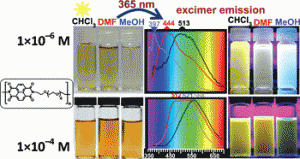
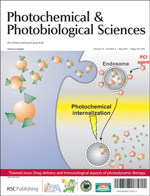 Issue 5
Issue 5